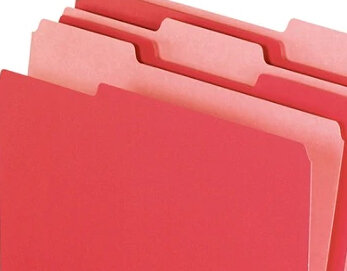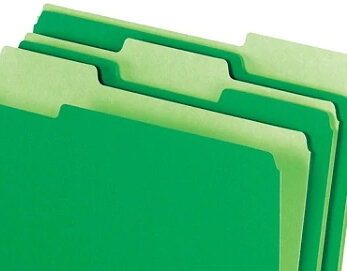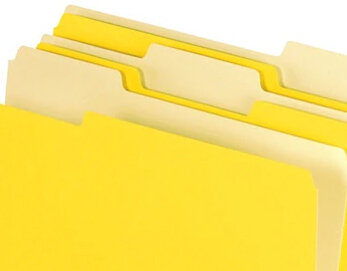Image by Henryk Niestrój from Pixabay
‘System’. That’s a word I avoid using during organizing presentations and client sessions. Understandably, that particular word occasionally freaks people out. For some it may seem too technical, too big, or too processy. In order to wrap our heads around transitioning to a new way of thinking or behaving, I prefer introducing concepts via small steps or inviting a “let’s try this” approach. Clients ask me to help them create systems or bemoan “if I only had a system.” If I dare mention system in return, shoulders tense, mouths clench, and eyebrows furl. Oops, what did I just step into and how do I clean it up? A less stress inducing alternative is to sidestep the term altogether with simplified action-oriented steps.
Here’s an example. “I need a system for organizing my papers! They’re in piles everywhere. I think I have a good idea what’s where, but when I’m in a pinch, I can’t find what I need.”
If you haven’t been to an office supply store (and I guess we’re not shopping for a while unless online), file folders have come a long way from dull, old-fashioned manila. And if you’re a visual/creative type, you might dig the manila so that you can jazz them up but keep in mind that nestled in file cabinets, your arty handiwork might be hard to see. Now available are a range of colored folders. Color coding is useful for storing bills, homework assignments, household maintenance files, tax documents enabling you to find what you need at a moment’s notice. It’s really a system, but shhh no one needs to know. Just stick on a computer generated or hand-written label, and you’re golden.
For example, if you like to manage paperwork in terms of levels of urgency, then a red file folder could be your urgent, must do today option. Urgent items are bills that will incur fees if not paid today or tomorrow or your child cannot enroll in an online course starting tomorrow morning unless you pay the registration fee now.
Green is action, but with less urgency such as needs to be done by the week’s or month’s end. A strategic planning outline for your boss or sample wedding invitations to order from the printer by next month for a fall celebration would be suitable here.
A yellow designation might be your someday file for recipes you wish to try or vacation options for when travel bans are lifted.
Create files for each family member or household categories. Folders available at OfficeDepot.com.
Perhaps you wish to have file folders set aside for keeping tabs on kids’ assignments (school or chores) or other family members. Green for Susie’s music and karate lessons, tan for Jeffrey’s art class and choir practice, purple for hubby’s review, and turquoise for grandma’s healthcare documents. You have the luxury to do whatever works best for the way you operate.
Glow hanging folders available at OfficeDepot.com
If you need more options than the colors of file folders that are available, and there are many, you could also add a variety of hanging folders into the mix to further subcategorize. For example, all of Susie’s files are in the dark green hanging folder and all of her subcategories are a variety of her favorite pastel colors. This is a chance to allow your creativity to flow while also giving you direction when its time to determine where the papers should go or to be retrieved.
Sometimes you might encounter indecision about the most sensible folder to store a document particularly if it falls under multiple categories. Try these steps:
1. First consider whether you truly need to save it. What are the chances you will ever refer back to it? Could the info. be easily obtained online or is this a unique document or something you should retain in your personal files? If the answer is yes to any or all of the above, then proceed to the remaining bullets.
2. Ask yourself where is the first place you would look for a file that might pertain to this topic? If logic is not your forte, then don’t fret over thinking logically, follow your internal guidance. What do you do if the document pertains to both the kids then what? Let’s suppose it’s for summer camp options. It might make sense to create a summer activity folder to house ideas for summer vacations, kids’ camps, local recreation and entertainment options, lists of babysitters and house sitters, packing lists, etc. All these could be subcategory folders in the summer folder or place the newspaper clippings and brochures en masse within the summer folder. Pick a vibrant color to represent summer fun.
3. Think about or ask where others might look for it if it is something that another family member might need to access in your absence. If you maintain receipts, you could consider a file for receipts paid for with your husband’s credit card so that if he needs to return a shirt to Kohl’s while you’re at work, he can quickly find it and get to the store. Label the hanging folder Credit Cards, and then use file folders to designate the primary user of each card.
Please keep in mind that any time you try something new, it will take a while for you to get used to and to get others fully onboard. Patience is key and tweaking is to be expected as you iron out the kinks. And call the process whatever makes you comfortable, system or not.









